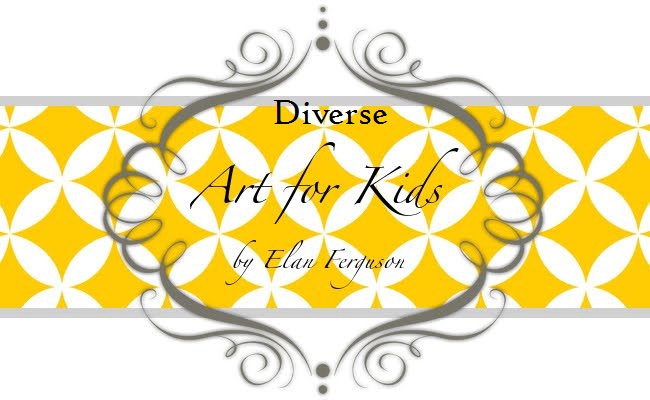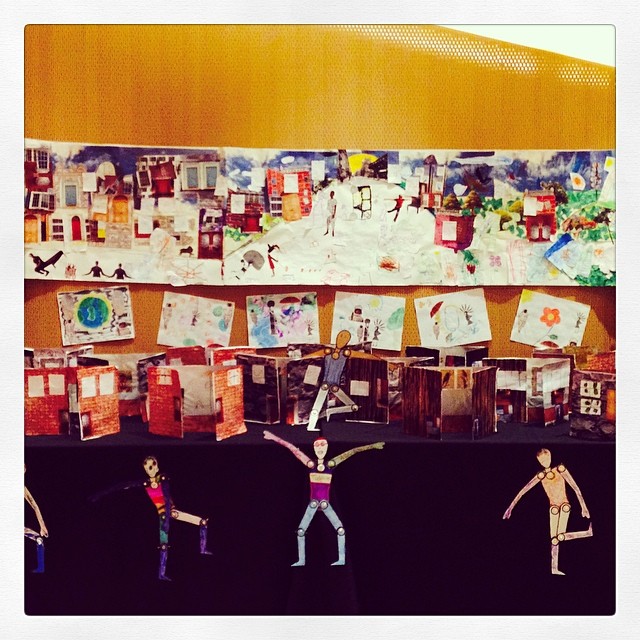by Elan Marie Dorcena Cadiz Ferguson
After 16 years of art education in New York City I have gained a lot of knowledge and insight on best practices, teaching techniques and materials. And because I live and work in the city I have learned the trails and tribulations of being a traveling teaching artist.
I worked for the Police Athletic League (P.A.L), Astoria Beacon Program, Young Adult Institute (Y.A.I), Casa Duarte, P.S. /I.S. 180, Say Yes To Education (affiliated with Columbia’s Teachers College), Harlem School of the Arts, Thurgood Marshall Upper and Lower Academies, Harlem Gems (Harlem Children Zone), No Longer with Empty, Cool Culture, Bank Street College, Weeksville Heritage Center, the Studio Museum in Harlem, New York Historical Society and always looking to expand my experience, practice my skill and learn as much as I can. My Bio.
After I left the Studio Museum in Harlem I had decided to begin assessing my work. During my reflection I remembered a workshop on hair braiding. I tried to get artist educator, Nontsikelelo Mutiti to facilitate a pop-up version of her Ruka (to braid/to knit/to weave) but due to her popularity and busy travel schedule she was unable to attend :(. Despite my disappointment, the show had to go on and I ended up creating a workshop where participants were given the opportunity to practice hair braiding and to see images and information about braiding throughout time and history.
 |
| Artwork by Nontsikeleo Mutiti |
As I began researching independently, I realized I have taken hair braiding for granted. Braiding can be traced to thousands of years ago with its roots in Africa and was used for many different reasons. For instance the pattern or style of braid could indicate an individuals community, age, martial status, wealth, power, social position and religion.
But braiding did not stay in Africa. As the evolved homo sapiens expanded all over Africa and beyond so did braiding. Depictions of braids and braiding can be found on artifacts/artworks that are estimated to go as far back as to 28,000 - 25,000 BCE, for example the Venus of Willendorf.
All over the world humans used braiding as a means to manipulate hair, leather, metal, plants, paper, fabric and more.
 | ||
| Gsaeng Style, Chosen Dynasty Korea
|
At first I was obsessing over images I found on Pinterest. Vintage photographs of people from all over the world with braids. As my interest developed I looked for credible websites that would give me free access to primary sources and detailed information. As a museum educator I instantly looked to larger institutions of learning such as the Metropolitan Museum of Art and Smithsonian. Metmuseum.org proved to be very helpful.
This past Saturday I had an audition with the Center of Arts Education. Part of the audition was to create and facilitate a 20 minute lesson. Although I ended up doing too much, preparing the lesson helped me realize how similar and different humans are and how those similarities can introduce diversity in a non threatening and familiar way;
Learning Diversity through Common Practices.
No matter how different humans are there are common similarities such as braiding that can connect us. Learning Diversity through Common Practices allows learners to experiment with the familiar and the unfamiliar on common ground. In Addition, art lessons that use common everyday activities in combination with visual inquiry, touch objects, images, hands on art activities and research, can teach students geography, social studies, English, math and more.
As I develop my ideas and learn more I will share in hope that humanity can develop and practice healthier ways of existing on this planet together as one race with many different religions, traditions, cultures and communities.
Other artists that have influenced my interest in hair and identity have been Lorna Simpson and So Yoon Lym.
 |
| So Yoon Lym |
 |
| Ebony series, Lorna Simpson |





